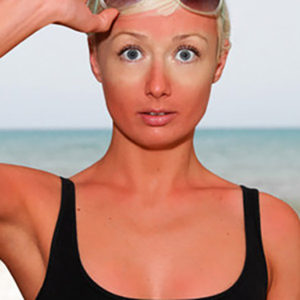
According to the American Academy of Dermatology (AAD), every time you go outside or use an indoor tanning bed, your skin is exposed to damaging ultraviolet (UV) rays. Not only can this cause premature skin aging (hello, wrinkles!), it also increases your risk of getting skin cancer, including melanoma — the second most common cancer in women ages 15 to 29.
TO PROTECT YOUR SKIN, FOLLOW THESE TIPS:
Don’t skimp on sunscreen. Generously apply sunscreen to all exposed skin, including your ears, neck, hands, feet and lips. Make sure your sunscreen is broad-spectrum, water-resistant and has an SPF of 30 or higher. Reapply every two hours or after swimming or sweating.
Treat yourself to protective clothing and sunglasses (…seriously!) Since no sunscreen can block 100% of the sun’s rays, wear clothing for added protection. Look for lightweight, long-sleeved shirts and pants and sunglasses with UV protection.
Make shade your new best friend. When possible, seek shade, especially from 10 a.m. to 2 p.m. when the sun’s rays are the strongest. If there’s no shade around, create your own using an umbrella or a wide-brimmed hat.
Be extra careful around water, sand and snow. These surfaces reflect the sun’s rays, increasing your chance of sunburn.
Say goodbye to tanning. Tanning – both indoors and out – can lead to wrinkles, age spots and skin cancer. If you want that golden glow, use a self-tanning product instead. Women younger than 30 are6 TIMES more likely to develop melanoma, the deadliest form of skin cancer, if they tan indoors. Even one indoor tanning session can increase your risk of developing melanoma by 20%.
If you see something, say something. When detected early, skin cancer – including melanoma – is highly treatable. Check your skin regularly. If you notice any new or suspicious spots on your skin, or anything that is changing, itching or bleeding, see a board-certified dermatologist.
